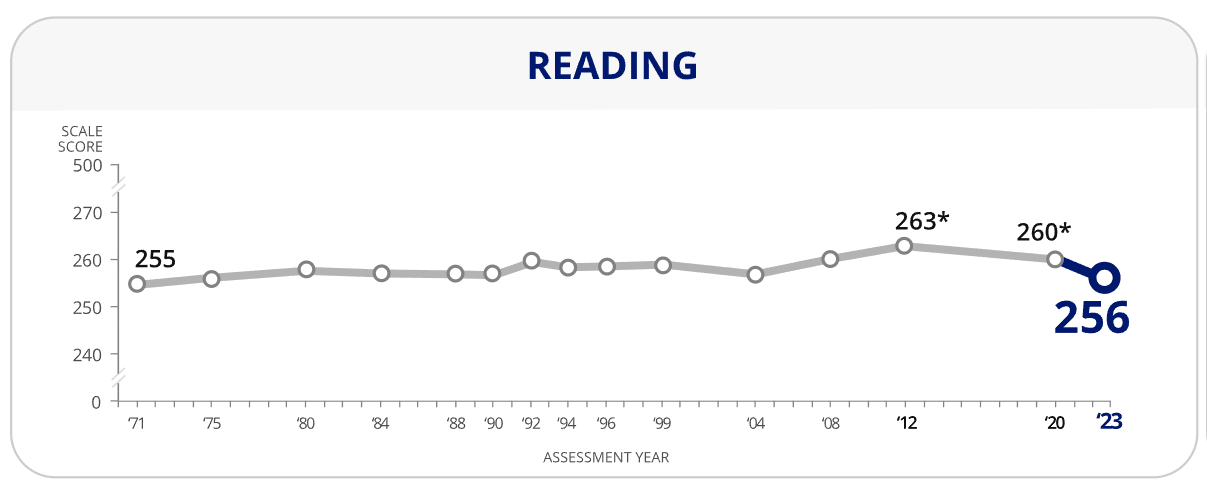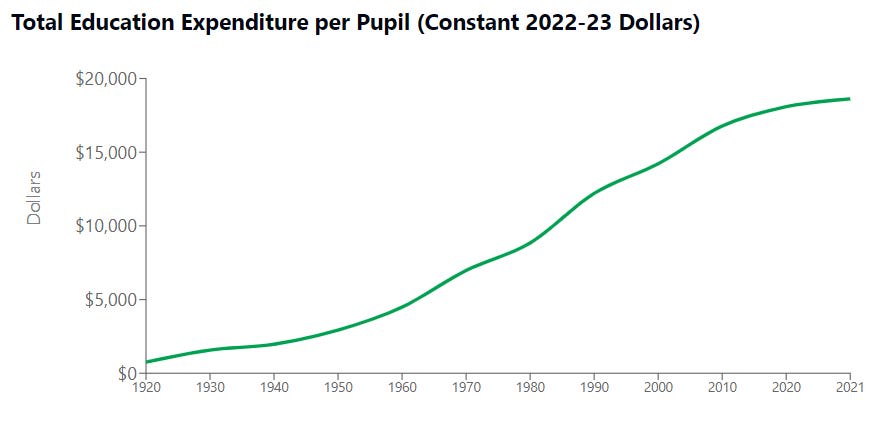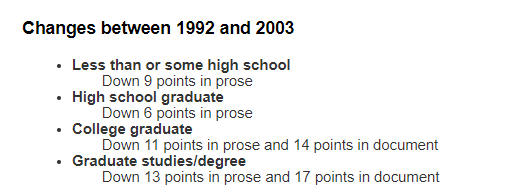Published on November 22, 2024 8:53 PM GMT
On the heels of Donald Trump’s election and his promises to end the Department of Education, you may have seen claims like these spreading around X.

This claim is based on two datapoints. First, is the literacy rate of around 99% in 1979 which was measured by the US Census. After the Department of Education was created in the same year, the census stopped measuring literacy in their surveys and it’s since been tracked by the National Center for Education Statistics (NCES). The tweet’s second number comes from a recent NCES result that shows that around 16% of sampled Americans are at or below level 1 English literacy.
The problem is that these claims compare two completely different standards of literacy. The census measure of illiteracy is defined as:
The inability to read and write a simple message in English or in any other language. Illiteracy, in this sense, should be clearly distinguished from functional illiteracy, a term used to refer to persons who were incapable of understanding the kinds of written instructions that are needed for carrying out basic functions or tasks.
- Source
If you can write a few words or even just your name in any language, this census measure will count you as literate.
The more recent NCES data point is a measure of English functional literacy which they define as:
The ability to understand, evaluate, use and engage with written texts to participate in society, to achieve one’s goals, and to develop one’s knowledge and potential.
. . .
English literacy [means completing] tasks that require comparing and contrasting information, paraphrasing, or making low-level inferences.
- Source
So the more recent data shows a lower literacy rate because you need more reading comprehension to count as literate in this data and you need to know English. No conclusions about how literacy has changed over time can be supported based on comparing these two data points.
There are long term assessments of literacy that we can compare over time. Scores on the Long-Term Trend reading assessment from the NCES have been essentially flat since 1971.

So the claim that literacy rates have fallen substantially since the Department of Education was founded is false.
You Don’t Have to Make Stuff up to Prove the Failure of the D.O.E
The real data on education is not as bad as collapsing literacy rates, but it is more than bad enough to merit removing or reforming the Department of Education.
Inflation adjusted spending per pupil tripled since 1970 while reading scores haven’t budged.

There has also been an astounding amount of credential inflation. The amount of time people spend in school has increased by more than three years since the 1970s as more people graduate high school and college, but performance on tests of skill or human capital is completely stagnant.
This suggests, a la Bryan Caplan’s Case against education, that many of these extra years of schooling are actually a socially inefficient zero-sum competition where it pays individually to get the most schooling and come out on top of your peers, but everyone would be better off if people invested less time and money in competing. Hundred billion dollar subsidies to student loans and higher education institutions have exacerbated this zero-sum race for little material gain.
Evidence for this: The NCES ran two rounds of a literacy test, one in 1992 and one in 2003. The overall average score on the test didn’t change (276 vs 275 out of 500), but within every educational attainment group scores dropped massively.

High school dropouts got less literate on average because the highest scoring dropouts in the 90s became the lowest scoring graduates in the 2000s as standards were lowered and more students were pushed through into more education. Literacy scores among Graduate degree holders dropped by 13-17 percentage points in a decade. If a graduate degree cannot even teach you how to read, it's probably not having large effects on any other more complex forms of human capital.
This means that across this decade of rising educational attainment, no one improved their reading skills at all. Instead, the standards for graduating from each level of schooling were just lowered and people spent more years slogging through high school or college.
The NCES hasn’t repeated this test and I couldn’t find breakdowns of scores by educational attainment over a longer period of time, but this trend of rising educational attainment due solely to lowering standards rather than rising ability has almost surely continued.
There are more issues one could cover here: subsidizing the student crisis, rewarding useless degrees at the expense of productive ones, and promoting the DEI ideology of the education profession.
But the main point is that fabricating data about the state of education in America is a terrible basis for reform It’s also unnecessary given how dire many parts of our education system actually are.
Discuss

